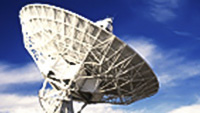Search and order online
European Service Module B-Rolls:
Artemis II – European Service Module perspective
The clip you see playing above is a web quality MP4. You may acquire the broadcast quality version(s) of this clip listed below. You may wish to check out the encoding settings of the available broadcast quality version(s) first.
Listed below are the available broadcast quality version(s) of this clip (so not including the web quality MP4 playing above). You may:
Quick clip selection:
- 00:02:42
- 00:00:49
- 00:19:26
- 00:02:04
- 00:03:29
-
00:04:51
 Now Playing
Now Playing - 00:01:15
- 00:06:03
- 00:01:41
- 00:01:27
- 00:00:55
- 00:04:19
- 00:02:02
- 00:07:42
- 00:03:09
- 00:02:21
- 00:12:30
- 00:06:21
- 00:06:37
- 00:02:25
- 00:01:03
- 00:04:13
- 00:00:42
- 00:10:33
- 00:03:00
- 00:09:29
- 00:00:00
- 00:01:25
- 00:01:17
- 00:05:34
- 00:02:39
- 00:01:42
- 00:08:52
- 00:01:47
- 00:04:43
- 00:03:10
- 00:01:28
- 00:05:12
- 00:08:24
- 00:08:39
- 00:03:40
- 00:02:18
- 00:04:12
- 00:01:27
- 00:05:48
- 00:04:00
- 00:09:32
- 00:02:38
- 00:03:00
- Title European Service Module B-Rolls - Artemis II – European Service Module perspective
- Length 00:04:51
- Footage Type TV Exchanges
- Additional Formats:
- Copyright ESA
- Description
After the uncrewed Artemis I test flight, the Artemis II mission will have astronauts demonstrate what the Orion spacecraft – powered by a European Service Module – can do on its voyage around the Moon.
Two astronauts will fly on the second Artemis mission and take over controls to show how Orion handles at close-quarter flying. While in Earth orbit the spacecraft will detach from its second stage, fly away, turn around, approach the second stage and then fly away again – all using the European Service Module’s 33 thrusters.
Whereas in the first Artemis mission the second stage fired Orion into its lunar orbit, for the second mission it will be the European Service Module that will give the spacecraft its final push to its voyage around the Moon.
The crew will fly Orion to 8889 km beyond the Moon before completing a lunar flyby and returning to Earth. The mission will take a minimum of eight days and will collect valuable flight test data.
The European Service Module is one of ESA’s many contributions to NASA’s Orion spacecraft and the Artemis programme that will send astronauts to the Moon and beyond. It provides electricity, water, oxygen and nitrogen as well as keeping the spacecraft at the right temperature and on course.
The European Service Module has 33 thrusters, 11 km of electrical wiring, four propellant and two pressure tanks that all work together to supply propulsion and everything needed to keep astronauts alive far from Earth – there is no room for error.


















































